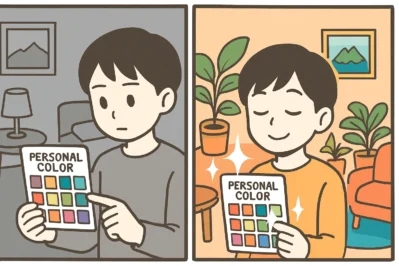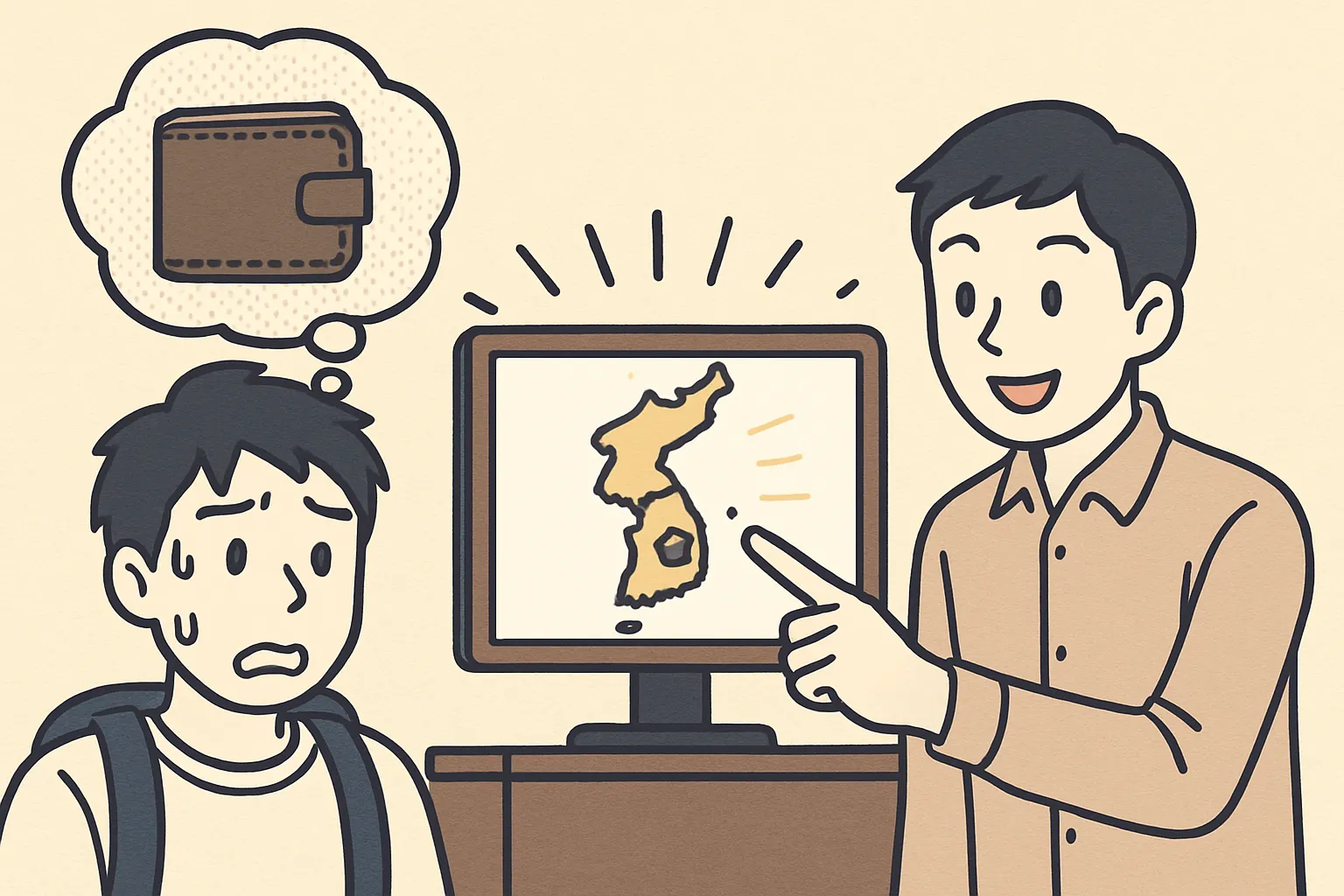Unlock Your Space’s Soul: Korean Color Psychology in Design
Hello! Welcome to Maeil Hangeul, your go-to source for upgrading your Korean skills to the next level!
Today, we’re stepping into the sophisticated world of architectural philosophy and spatial design. Specifically, we’ll explore how to discuss the use of color psychology in interior design—a perfect topic for when you want to engage in deeper, more nuanced conversations in Korean.
Lately in Korea, the “Personal Color” (퍼스널 컬러) craze has exploded beyond the world of fashion and makeup. Now, it’s transforming how people design their homes! It’s no longer just about what looks good; it’s about creating a space that reflects your inner self and enhances your well-being. This trend makes discussing design not just an exercise in aesthetics, but a fascinating psychological and philosophical conversation. Ready to sound like a design pro? Let’s dive in!
Core Expressions for Your Design Vocabulary
Here are some advanced expressions that will allow you to articulate complex design concepts with fluency and precision.
1. 조화를 이루다 (johwa-reul iruda)
- Pronunciation: [jo-hwa-reul i-ru-da]
- English Meaning: To achieve harmony; to be in harmony.
- Detailed Explanation: This is a highly refined expression that goes beyond the simpler
어울리다(to match/suit).조화를 이루다is used to describe the elegant and intentional way multiple components—be it colors, textures, or furniture pieces—come together to create a cohesive and aesthetically pleasing whole. It implies a sense of balance and artistry. You would use this in formal presentations, academic discussions, or when speaking with a design professional.
2. 공간에 생동감을 불어넣다 (gonggan-e saengdonggam-eul bureoneota)
- Pronunciation: [gong-gan-e saeng-dong-gam-eul bu-reo-neo-ta]
- English Meaning: To breathe life/vitality into a space.
- Detailed Explanation: This is a wonderfully metaphorical phrase.
공간means “space,”생동감means “liveliness” or “vitality,” and불어넣다means “to blow or breathe into.” You use this expression to describe the transformative effect of a design element, such as a vibrant accent color, a unique piece of art, or dynamic lighting. It suggests that the space was once static or dull, but has now been animated and energized.
3. 심리적 안정감을 주다 (simni-jeok anjeonggam-eul juda)
- Pronunciation: [sim-ni-jeok an-jeong-gam-eul ju-da]
- English Meaning: To give a sense of psychological stability/comfort.
- Detailed Explanation: This expression is at the heart of our theme today. It directly connects design choices to their psychological impact.
심리적means “psychological,”안정감is a “sense of stability/security,” and주다means “to give.” It’s the perfect phrase for explaining the purpose behind using specific colors, like earthy tones, soft blues, or gentle greens, to create a calming and restorative environment.
4. 고유의 정체성을 부여하다 (goyu-ui jeongcheseong-eul buyeohada)
- Pronunciation: [go-yu-ui jeong-che-seong-eul bu-yeo-ha-da]
- English Meaning: To bestow a unique identity upon something.
- Detailed Explanation: This is a very sophisticated and academic phrase.
고유의means “innate” or “unique,”정체성means “identity,” and부여하다is a formal verb for “to grant” or “to bestow.” You use this to argue that a design choice isn’t just decorative, but foundational to giving a space its own distinct character and story. It aligns perfectly with the modern Korean trend of personalization.
Example Dialogue
Let’s see how these phrases work in a real conversation. Here, an interior designer (A) is consulting with a client (B) who is a fan of the K-pop group SEVENTEEN and wants to incorporate their official colors into her new apartment.
A: 고객님, 새로 이사하실 공간의 전체적인 콘셉트는 생각해 보셨나요?
(Client, have you thought about the overall concept for your new space?)
B: 네. 저는 아이돌 그룹 세븐틴의 팬이라서, 로즈쿼츠와 세레니티 색상을 활용하고 싶어요. 너무 유치해 보이지 않으면서도, 두 색상이 조화를 이루도록 디자인해 주실 수 있나요?
(Yes. I’m a fan of the idol group SEVENTEEN, so I’d like to use the colors Rose Quartz and Serenity. Can you design it so the two colors achieve harmony without looking too childish?)
A: 물론입니다! 아주 흥미로운 도전이네요. 벽은 부드러운 화이트 톤으로 하고, 가구나 소품에 두 색상으로 포인트를 주면 공간에 생동감을 불어넣을 수 있습니다. 특히 파스텔 톤은 심리적 안정감을 주는 효과도 있고요.
(Of course! What an interesting challenge. If we keep the walls a soft white tone and use the two colors as accents in the furniture and props, we can breathe life into the space. Pastel tones are also effective in giving a sense of psychological stability.)
B: 좋아요! 평범한 아파트가 아니라, 저만의 팬심이 담긴 고유의 정체성을 부여하고 싶거든요.
(Perfect! I don’t want just an ordinary apartment; I want to bestow a unique identity that contains my love for the group.)
Culture Tip & Trend Deep Dive
The concept of 퍼스널 컬러 진단 (Personal Color Diagnosis) has become a rite of passage for many young Koreans. It’s a consultation where a professional drapes different colored fabrics on you to determine your ideal palette (e.g., Spring Warm, Summer Cool, Autumn Mute, Winter Bright).
While it started in fashion, this trend’s expansion into interior design speaks to a larger cultural shift. In a society that has historically emphasized community and conformity, there’s a growing, powerful desire for 개성 (gaeseong – individuality) and self-expression.
You can see this vividly in Korean media. On popular reality shows like “나 혼자 산다” (I Live Alone), celebrities meticulously curate their homes to be extensions of their public personas and personal tastes. Their choice of a bold, artistic color scheme or a minimalist, monochrome palette is a deliberate statement about who they are. So, when you use a phrase like 고유의 정체성을 부여하다, you’re not just talking about paint; you’re tapping into this very modern Korean cultural value of crafting a personal narrative through space.
Let’s Review and Practice!
Great job today! We’ve learned four powerful expressions to discuss design and psychology like a native speaker: 조화를 이루다, 공간에 생동감을 불어넣다, 심리적 안정감을 주다, and 고유의 정체성을 부여하다.
Now, time to put your knowledge to the test!
- Fill in the blank:
녹색 식물을 사무실에 두는 것은 ___________ ___ 데 도움이 된다.
(Placing green plants in an office helps to give a sense of psychological stability.) -
Create a sentence:
Imagine you are designing your dream home. Using the phrase고유의 정체성을 부여하다, write one sentence in Korean describing a key feature.
What’s your “personal color,” and how would you use it in your own space? Share your ideas in the comments below using the expressions we learned today! We’d love to see what you come up with.






